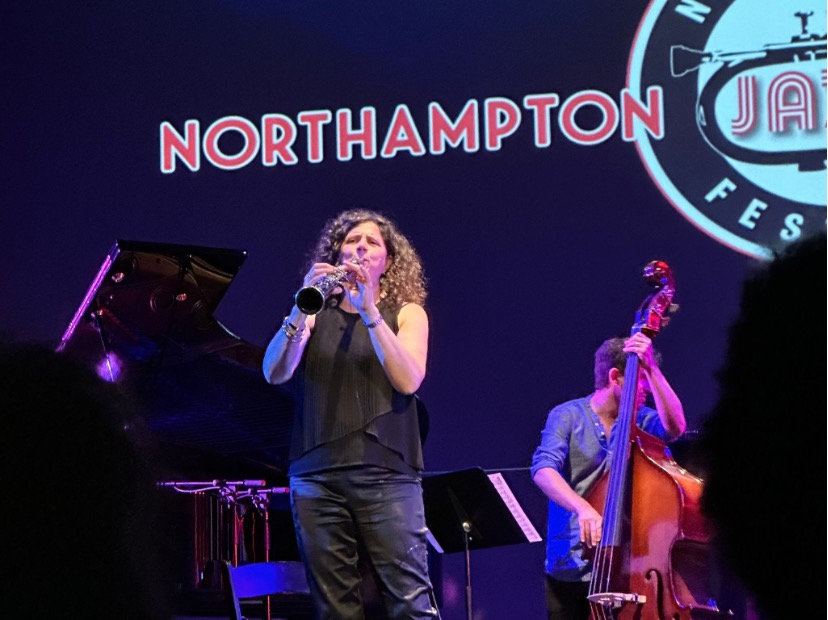Workers pressing records and cutting grooves in vinyl pieces of plastic 60 years ago never would have pictured the idea of streaming millions of songs out of thin air. As technology progresses, so does the avenue in which people listen to music. Records made way for cassettes, cassettes made way for CDs and CDs made way for the iPod.
Cassette tapes were one of the first media devices that allowed users to make a custom set of their favorite songs on one storage device.
Mixtapes helped spread new music at the rate of the common cold. In the 1980s, mixtapes were most prominent in teen culture. For the first time, artists could record and distribute their music independent of a major record label. It was now easier than ever to share new music with friends. Teenagers holed up in their rooms were mixing and recording music onto cassettes from every music source they could get their hands on, like an alchemist mingling chemicals to make their elixirs.
Mixtapes in the 1980s and 90s can be compared to curating a playlist on Spotify and sharing the link to all your friends. With cassettes, the ease of creating your own playlist with your own music was available for almost anyone with a tape machine.
The concept of music streaming did not spring up out of nowhere. Spotify is one of the first companies to successfully pair high quality audio streaming with such a low subscription cost. However, it would not be what it is today without a few other significant events in the history of music streaming. Going back to the birth of music streaming, there is one major influential source: Napster.
Initially founded by Shawn Fanning and Sean Parker in 1999, Napster focused on peer to peer file sharing, which allowed users to share mp3 files of music they had on their computers with other Napster users. Prior to Napster, if consumers wanted one song by a particular artist, they had to buy the full priced CD at the local record store; the same was true with records.
With the rise of Napster, anyone had the ability to download any song they wanted — all for the low cost of nothing. While an incredibly revolutionary idea at the time, the record industry was not too thrilled about losing all their profit and artists like Metallica were very displeased with this idea of streaming music.
A war ensued between Napster and the record industry, which eventually made its way to the Supreme Court. Dozens of record companies — Atlantic, Motown, Sony, Geffen and Capitol amongst others — sued Napster for copyright infringement along with various other claims, resulting in Napster shutting down their servers.
But the idea of streaming music had become planted in the heads of millions of people. Even though Napster was forced to close its doors, the damage to the recording industry was already done and Napster’s impact on the music streaming industry sparked many other companies to follow in its path.
Around the same time, Pandora Radio had a feature that is currently a large draw for Spotify users. Pandora made a name for themselves in 2000 with a unique feature available on their platform that recommended music to customers based on the music they listen to through favorited stations. A user could discover new music quite easily with Pandora’s discovery system. Recommendations could be made by the Pandora program by either “liking” or “disliking” a track. The program would then be able to find more songs that fit into certain criteria based on previous songs and artists. Modern streaming services like Spotify would take this idea and expand on it even further.
During the early to mid 2000s, as the CD sales plummeted, the rate of illegal music downloading increased drastically. Built off the work of Napster, Myspace was an important social media site that cleared the runway for a plethora of music streaming services. Myspace originated as an early social media platform, later developing into a hub for bands and artists to post their music for the general public.
Myspace became the location for musicians to upload all of their own songs to get discovered by a vast audience new listeners all over the world. The Arctic Monkeys are one of the most prominent bands that can thank Myspace and other file sharing websites for the success of their first album, “Whatever People Say I Am, That’s What I’m Not.”Their debut album is still the fastest selling debut album by a band in British music history due to the buzz stirred on these social media websites. Myspace played a monumental role in the discovery of new music during the pre-streaming age of the early 2000s.
Only a year apart, yet in the same location, Spotify and SoundCloud were founded in Stockholm, Sweden and continue to be some of the most prominent music streaming companies to date. According to Statista, Spotify, Apple Music and Soundcloud make up today’s main source of music listening. Specifically, Spotify and SoundCloud each have a unique aspect to their service that push music discovery and sharing farther than ever before.
As easy it is to discover new music on streaming services, it’s just as easy for artists to post their music on SoundCloud for anyone to listen to. SoundCloud’s accessibility for artists, paired with ease of discovering new music, became the perfect storm for SoundCloud rappers to explode into the mainstream. Emerging young artists embraced the raw and simple nature of SoundCloud by creating tracks that brewed a new genre in the hip-hop realm. The insertion of SoundCloud rappers into the mainstream birthed two entirely new sub-genres: mumble rap and emo rap. Regardless of public opinions on mumble rap, there is no arguing that it changed the way modern hip hop is created, consumed and distributed; especially after popular artists like Post Malone, Lil Uzi Vert, XXXTentacion, Travis Scott and Kodak Black got their start by posting tracks to SoundCloud.
With today’s variety of music streaming services, it is remarkable that we now have the ability to achieve a high-quality audio playback across almost any mobile device, computer or tablet for such a low cost. Spotify, Apple Music, and SoundCloud have earned their status as household names in the music industry and have come out on top as the main music streaming services for many music and podcast listeners.
Spotify and SoundCloud both have their own strengths and weaknesses. Spotify’s variety and vast library of music triumphs over Soundcloud. SoundCloud is often littered with covers of songs and does not have a substantial number of podcasts, as compared to Apple Music and Spotify, but its saving grace is that an artist can freely post their own songs and remixes. Live versions of songs recorded across a bands entire tour, along with remixes of favorite songs by other artists, are heavily featured in SoundCloud’s expansive library. SoundCloud closely resembles early Myspace due to its open space that allows artists to post freely.
Spotify and other music streaming software have changed the way people listen to music for the better with immense accessibility across all devices. Millions of people have switched over to Spotify as their main source of music consumption because of the vast amount of music available at their fingertips and its ease of use. With Spotify, you have the ability to stream any song you’d like from any year, from any genre, and from any artist in just a few seconds. Quality of the stream is very important, and Spotify has found the sweet spot in making their service affordable with music of high-quality playback.
Spotify understands the previously mentioned idea of creating playlists of your favorite music to share with your friends and family. Their algorithm for creating playlists based on your specific music tastes make new music and artists much easier to discover. From their professionally curated playlists like “Ultimate Indie” and “Coffee Table Jazz,” to your shower dancing playlist, it’s all accessible to every Spotify user to discover. Spotify’s unique “Discover Weekly” playlist continues to be the best music discovery feature out of any streaming service. It sets them apart from every other competitor on the market. Now, Spotify is not pumping out Soilent Green, but they take songs you listen to and save, along with the billions of playlists created by all other users, and cross match those. Your “taste profile” is combined with similar songs to sift through songs you haven’t heard, but fit a certain criterion based on what you usually listen to. So, next time you find a song you enjoy in your Discover Weekly playlist, be sure to thank the person sitting next to you.
With every new advance in technology, improvement in the way we listen to music seems to closely follow. Music streaming continues to be the main way people choose to listen to their music. Thanks to smartphones and apps, the need for a music library on your phone is almost considered obsolete. Spotify, Soundcloud, and other streaming services eradicate the idea that all the songs you want to listen to have to be downloaded directly to your phone.
With streaming services currently catering to all your audio needs, it will be interesting to see how much more improvement can be made in music streaming and music storage devices. We’ve already come so far with so much history and development leading up to music streaming. It’ll be interesting to see what endures and what falls to the wayside in the way we listen to music in the next 15 years.
Quinn He can be reached at [email protected].




















